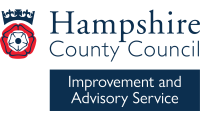Isle of Wight SEN Support Toolkit
10. SEN Finance

Isle of Wight SEN funding in mainstream schoolsSEN funding formula for mainstream primary and secondary schoolsThe following information has been written for an audience of parents and carers, but may nonetheless be useful for SENCOs who are not yet familiar with school funding for SEND. How is funding made available to meet the needs of children with SEN in mainstream schools?All maintained schools (including mainstream academies) receive an annual budget at the beginning of each financial year (1 April). The allocation for all children, including those with SEN, is mainly based on the number and age of the children within the school. In addition, further funding is allocated within the annual budget of all schools, to cover the cost for extra provision for the majority of children with SEN including those on SEN Support. It is for each school to determine how to meet the children’s needs, but it can be used to provide additional support over and above the usual staffing arrangements, to purchase resources or to access professional advice. This funding forms a notional SEN allocation of up to £6,000 per child or young person with SEN. What is the formula for funding SEN in mainstream schools?The funding formula for annual budgets uses data about low attainment and social deprivation, as decided by the Department for Education (central government). This low attainment and social deprivation data gives a profile for each school, enabling the local authority to share the available funds between the annual budgets of all schools, based on their profiles. How are different types of need recognised?All types of need are covered by this funding model which results in the allocation of a sum of money which is part of the whole school budget. This can be used to address the needs of children, in any category, as identified, assessed and prioritised by the school. Will I know if my child is receiving additional help?Your child’s headteacher, or a member of the teaching staff, will discuss with you how the school proposes to meet your child’s needs. You will be kept fully informed of your child’s progress. How is the money used?The money goes directly to the school’s budget. It is provided as a whole-school resource which allows the school flexibility to: · respond promptly and efficiently · organise additional resources · achieve the greatest progress for all children with SEN. How can I be sure that the school is appropriately identifying and funding the needs of my child?Teachers will discuss your child’s needs with you and agree a way forward. You will be consulted and kept fully informed of any developments. These procedures are reinforced by the national Special Educational Needs and Disability Code of Practice: 0 to 25 years, which offers helpful advice to schools and parents on identifying and assessing SEN. This Code is available from the Department for Education (DfE). The SEN funding arrangements support the Code by ensuring that schools have the resources they need to help children experiencing difficulties. When is an Education, Health and Care (EHC) plan required?In most cases the arrangements made by the school will ensure that your child gets all the necessary help. For a very small number of children (approximately two per cent of the total school population) more help may be needed and a statutory assessment suggested. This is only required for children who have the most significant and longterm special educational needs. An EHC plan will be required if a child needs a special school or a place in a special provision in a mainstream school. How are children with EHC plans affected by the SEN funding formula?Schools must provide the identified support for all children who have significant and complex needs and for whom provision is detailed in an EHC plan. Arrangements must be flexible enough to support specific interventions for these children. Where children have been assessed as requiring Education, Health and Care (EHC) plans, the school is required to fund the first £6,000 of the cost of the provision required by the EHC plan (from its annual budget). When the EHC plan costs more than £6,000, additional specific funding of the amount by which the cost exceeds £6,000 will be allocated to the school as a top-up. The top-up will be paid from funds which the local authority manages centrally on behalf of schools, and only applies for pupils who have been assessed for EHC plans, as determined by the local authority. All EHC plans will be reviewed within the normal annual review arrangements. Children’s needs do change and it is possible that, at the annual review meeting, the school will wish to discuss the possibility of changing the level or type of additional support offered. Under some circumstances, a child may no longer require an EHC plan, for example, where a child makes progress and the outcomes of the EHC plan have been met. The proposal to cease to maintain the EHC plan would be discussed with you and no decision would be taken without you having the opportunity to have your views carefully considered. When a child’s EHC plan is ceased the school will continue to be responsible for monitoring progress and ensuring that the child’s needs are met. How can I find out more?School staff who want further information should contact the
school finance officer who will be able to direct you to more detailed
information. Or you may wish to visit the Department of Education site The
notional SEN budget for mainstream schools: operational guidance - GOV.UK
(www.gov.uk)
|
|
Do you have questions or queries?Contact the SEN Support Line using this link. Looking for training and development?Use this link to find Isle of Wight specific training opportunities for schools. Quick LinksSocial, Emotional & Mental Health
|

